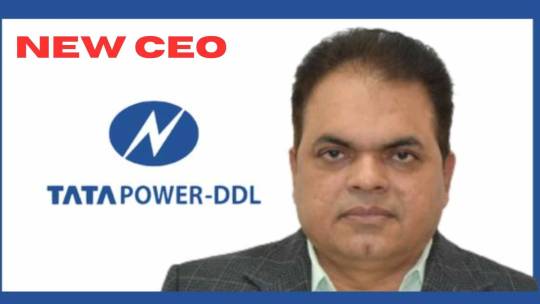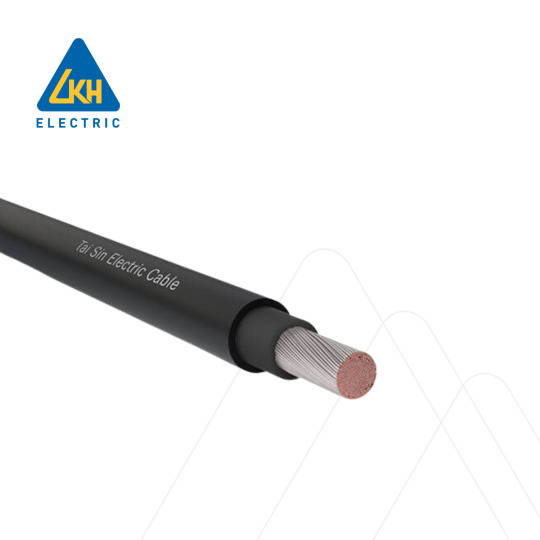#power distribution
Text

What could you possibly have to say that would justify the massacre of over 11,500 children? I've seen plenty of Zionist rhetoric, and not one bit of it has been convincing. I find it extremely insulting to see a genocide being carried out in my name, as a queer Jewish woman. I find the conflation of Zionism and Judaism to be blatantly antisemitic. What could I possibly feel, seeing that children are being murdered in my name, if not disgust and outrage?
(Side note: wtf is someone with a fucking Harry Potter url doing talking about antisemitism? Did they go play the blood libel game to calm down after this?)
#fuck israel#fuck imperialism#fuck islamophobia#fuck isntreal#antisemitism#anti zionisim#zionism#zionistterror#social justice#yeah#the more you know#fuck you#israel#jew#jewish#jew stuff#i hate it here#what is this#please#power distribution#politics#nope#no#not cute#insult#insulated#insults#queer#concerns
11 notes
·
View notes
Text
Chicago, Aug. 09, 2022 (GLOBE NEWSWIRE) -- Synchronous Condenser Market is projected to grow from USD 661 million in 2022 to USD 811 million by 2030, at a CAGR of 2.6%, according...
#synchronous condenser#Synchronous Condenser Market#energy#power#electricity#utilities#power generation#electric utilities#renewable energy#transmission and distribution#power transmission#transmission lines#power line#power lines#distribution lines#power distribution#hvdc#hvdc network#hvdc transmission#power grid#power grids
2 notes
·
View notes
Text
The global Virtual Power Plant Market is expected to grow from an estimated USD 1.9 billion in 2024 to USD 5.5 billion by 2029, at a CAGR of 23.4% during the forecast period. Virtual power plants are essential because they provide enhanced grid stability by optimizing and integrating diverse energy sources, contributing to increased energy efficiency and the seamless incorporation of renewable energy into power systems. This results in a more resilient and sustainable energy infrastructure. Growth in the smart grid directly influences the virtual power plant market. Additionally, factors such as an increasing share of renewable energy, declining costs of solar generation and energy storage, and a shift from centralized to distributed generation drive the virtual power plant market expansion.
#virtual power plant#energy#energia#power generation#utilities#power#utility#electricity#renewable power#renewableenergy#renewable resources#virtual power plants#power distribution#power plant#nuclear power plant#power plants#biomass energy#distributed energy#distributed generation#renewables#clean power generation#clean energy#sustainable energy#sustainability
0 notes
Text
Tata Power’s New CEO: Gajanan Kale Takes the Helm at TP Western Odisha Distribution Limited!
New Delhi: In a strategic move, TP Western Odisha Distribution Limited has appointed Gajanan S. Kale as its Chief Executive Officer (CEO). The company made this announcement on Monday. Kale officially assumed the role of CEO on April 19.
TP Western Odisha Distribution Limited Welcomes Kale
Praveer Sinha, Managing Director and CEO of TP Western Odisha Distribution Limited, expressed his warm…

View On WordPress
#CEO Appointment#Electricity Sector#Gajanan Kale#Industry Leadership#Power Distribution#Strategic Move#Tata Power
0 notes
Text
Power Distribution in industrial electrical design
Power distribution in industrial electrical design refers to the effective use of transformers, switchgear, distribution panels, and cables to transport electricity from the source to various pieces of machinery and equipment while maintaining optimal performance, safety, and dependability.
0 notes
Text
Jay Vee Sales & Services is a trusted Power Distribution Equipment Supplier committed to delivering cutting-edge solutions for efficient and reliable electrical distribution systems. With a focus on quality products and personalized service, Jay Vee caters to the diverse needs of industries, offering a comprehensive range of power distribution equipment. From transformers to switchgear, Jay Vee ensures clients receive top-notch products that adhere to industry standards, empowering businesses with the essential infrastructure for seamless and secure power distribution.
1 note
·
View note
Text
youtube
#distribution transformer#transformer#electrical transformer#transformers#electrical engineering#power transformer#distribution transformers#electrical transformers#transformer (invention)#electrical transformer explosion#electric transformer#power distribution#core of distribution transformers#electrical distribution#earthing for distribution transformers#distribution transformer in hindi#structure of distribution transformer#electrical distribution system#Youtube
0 notes
Text
Revolutionizing the Energy Sector: Artificial Intelligence and Machine Learning by TwoKnct Media & Publishing Ltd

The energy sector stands on the cusp of transformation, driven by technological advancements in artificial intelligence (AI) and machine learning (ML). These disruptive technologies are revolutionizing how energy is produced, distributed, and consumed, ushering in an era of greater efficiency, sustainability, and reliability. From optimizing renewable energy sources to enhancing grid management and predictive maintenance, AI and ML are reshaping the energy landscape.
Optimizing Renewable Energy Sources: Renewable energy sources like solar and wind power are becoming increasingly prevalent in the global energy mix. However, their intermittent nature poses challenges for grid stability and energy management. AI and ML algorithms offer solutions by predicting renewable energy generation patterns, optimizing power output, and integrating renewable sources seamlessly into existing grids.
ML algorithms analyze historical data, weather patterns, and other variables to forecast renewable energy generation with remarkable accuracy. These forecasts enable grid operators to anticipate fluctuations in supply and demand, facilitating better resource allocation and grid balancing. Moreover, AI-driven optimization algorithms can dynamically adjust parameters such as turbine angles or solar panel orientations to maximize energy yield based on real-time conditions.
Enhancing Grid Management: Maintaining a stable and resilient energy grid is crucial for ensuring uninterrupted power supply to consumers. AI and ML play a vital role in enhancing grid management by offering predictive analytics, real-time monitoring, and intelligent automation.
Predictive analytics algorithms leverage historical data and machine learning models to identify potential grid failures or bottlenecks before they occur. By analyzing data from sensors, smart meters, and IoT devices, these algorithms can anticipate equipment failures, predict demand patterns, and optimize energy distribution routes. This proactive approach minimizes downtime, reduces maintenance costs, and enhances overall grid reliability.
Real-time monitoring systems equipped with AI algorithms continuously analyze grid data to detect anomalies, identify inefficiencies, and optimize energy flow in response to changing conditions. These systems enable grid operators to make informed decisions swiftly, mitigating risks and improving grid performance.
Intelligent automation powered by AI algorithms streamlines grid operations by autonomously adjusting energy flows, rerouting power, and optimizing load distribution. By incorporating advanced control systems and decision-making algorithms, energy grids can operate more efficiently, adapt to fluctuations in supply and demand, and integrate renewable energy sources seamlessly.
Predictive Maintenance: Maintaining energy infrastructure is essential for ensuring safety, reliability, and longevity. Traditional maintenance practices often rely on scheduled inspections or reactive repairs, leading to inefficiencies and downtime. AI and ML-based predictive maintenance techniques offer a proactive approach by analyzing sensor data, equipment performance metrics, and historical maintenance records to forecast equipment failures and prioritize maintenance activities.
Machine learning algorithms trained on vast amounts of sensor data can identify patterns indicative of impending equipment failures, such as abnormal vibrations, temperature variations, or voltage fluctuations. By continuously monitoring equipment health in real-time, these algorithms can predict potential failures with high accuracy, allowing operators to intervene preemptively and schedule maintenance activities during planned downtime.
Furthermore, AI-driven predictive maintenance systems optimize maintenance schedules, spare parts inventory, and resource allocation, reducing operational costs and minimizing downtime. By prioritizing critical maintenance tasks based on risk assessments and performance analytics, energy companies can enhance asset reliability, extend equipment lifespan, and improve overall operational efficiency.
Conclusion: Artificial intelligence and machine learning technologies are reshaping the energy sector, driving innovation, and unlocking new opportunities for efficiency, sustainability, and resilience. From optimizing renewable energy sources to enhancing grid management and predictive maintenance, AI and ML are enabling energy companies to overcome challenges, improve operational performance, and deliver reliable, affordable, and sustainable energy solutions for the future. Embracing these transformative technologies is essential for staying competitive in an increasingly dynamic and interconnected energy landscape.
#artificial intelligence#renewableenergy#solar energy#power distribution#machine learning#conference#ai#valencia#oilandgas#energy#visit
0 notes
Text
Norms, Power, and the Western Delusions of Benevolence
Dive into a compelling critique of Western self-perception as benevolent powers in this insightful blog post. Uncover the complexities of cultural norms, political orders, and the often overlooked role of power in shaping these norms. #Norms #Power #West
Cultural norms shape the emergence and evolution of political orders. However, these norms are not static or homogeneous, but rather dynamic and diverse, reflecting the power relations among different actors in local and global contexts. Huntington (1996) argued that the clash of civilizations, or the cultural conflict between different regions and groups, is the main source of global instability…

View On WordPress
#Clash of Civilizations#Colonianlism#Cultural Identities#Cultural Norms#De Tocqueville#Elites#Global Elites#Global Instability#Human Societies#Huntington#International Norms#Political Orders#Political Outcomes#Post-Cold War Era#Power#Power Distribution#Power Relations#Rules-based Order
0 notes
Text
Discover the foundation of the Power Distribution Panel. Understand the role of Power Distribution Panel manufacturers, their expertise, safety and compliance standards, and innovative approaches.
0 notes
Text
Step-down Transformer Market Report Includes Dynamics, Products, and Application, Value, Size, Share 2017 – 2032
Step-down transformers are electrical devices used to lower the voltage levels of electrical power for various applications, and the step-down transformer market refers to the sector of the economy that produces and supplies step-down transformers.
From 2017 to 2030, the size of the global step-down transformer market is anticipated to increase at a CAGR of 5.1%.
Market Overview:
A sizable portion of the worldwide power transformer market is the step-down transformer market.It serves a broad range of industries, including the production, transmission, and distribution of electricity as well as the commercial, residential, and industrial sectors.Step-down transformer production and maintenance are performed by manufacturers, suppliers, distributors, and service providers in the market.
Increasing Power Demand:
The market for step-down transformers is primarily driven by the rising global demand for power.
Increased power consumption is a result of rapid urbanisation, industry, and infrastructural expansion, which calls for the use of step-down transformers.
Renewable Energy Integration:
Step-down transformers are necessary for the grid integration of renewable energy sources, such as solar and wind power, in order to reduce the generated electricity's voltage to grid-acceptable levels.
Grid Modernization Initiatives:
To increase effectiveness and dependability, many nations are putting their attention on modernising their electricity infrastructures.
Step-down transformer replacement or installation is a common component of grid modernization projects, which is fueling market expansion.
Industrial Growth:
Step-down transformers are necessary for the activities of the industrial sector, which includes manufacturing, oil and gas, mining, and other industries.
The need for step-down transformers is fueled by industrial expansion, particularly in emerging economies.
Smart Grid Development:
The creation of sophisticated step-down transformers with monitoring and control features is necessary for the development of smart grids, which allow for two-way communication and effective energy management.
Aging Grid Infrastructure:
The infrastructure of many nations' electricity grids needs to be modernised or rebuilt.
As obsolete, less efficient transformers are replaced, this opens up chances for the step-down transformer market.
Energy Efficiency Regulations:
Governments and environmental organisations' strict energy efficiency laws force the use of energy-efficient step-down transformers, which fosters market expansion.
Technological Advancements:
Step-down transformers are becoming smaller, more effective, and more dependable because to developments in transformer design, materials, and manufacturing techniques.
Market demand is increasing for innovations like digital monitoring systems and solid-state transformers.
These factors collectively contribute to the growth and demand for step-down transformers in various sectors. The market is expected to expand further as the need for electricity continues to rise, renewable energy integration expands, and infrastructure development projects increase worldwide.
Trends:
1. Growing Demand for Energy-Efficient Solutions: The demand for energy-efficient solutions is growing in the step-down transformer market. There is an increasing need for transformers that can effectively step down high voltage electricity to lower voltages for diverse applications due to a focus on lowering energy consumption and carbon emissions. To satisfy these demands, manufacturers are creating transformers with higher efficiency ratings.
2. Integration of Smart Technologies: The market for step-down transformers is experiencing a major trend towards the integration of smart technologies. A growing number of people are interested in smart transformers that have sophisticated monitoring and control capabilities. These transformers improve the overall effectiveness and dependability of power distribution networks by enabling real-time monitoring, remote control, and diagnostics. Integration of the smart grid is made easier by the use of modern communication systems and the Internet of Things (IoT).
3. Expanding Renewable Energy Sector: The need for step-down transformers is being driven by the rapidly growing renewable energy sector. Higher voltage electricity produced by renewable energy sources like solar and wind must be scaled down before delivery. Step-down transformers are increasingly being used in solar and wind farms in order to enable effective power transmission to the grid as nations throughout the world prioritise the development of renewable energy.
4. Infrastructure Development and Industrialization: Step-down transformer demand is being fueled by infrastructure development and industrialization initiatives in emerging economies. For power transmission and distribution networks in a variety of industries, including manufacturing, construction, and mining, these transformers are crucial. Step-down transformers are anticipated to be required for infrastructure projects because to the ongoing rise of urbanisation and industrial activity.
5. Focus on Grid Modernization and Power Quality: To improve power quality and dependability, many nations are investing in grid modernization projects. Step-down transformers are essential to this procedure because they ensure efficient power distribution and maintain ideal voltage levels. There is a rising focus on updating and replacing outdated transformers with modern, more efficient versions as utilities work to increase grid efficiency, decrease losses, and minimise downtime.
Here are some of the key benefits for stakeholders:
Voltage Regulation and Power Distribution
Electrical Safety and Equipment Protection
Energy Efficiency and Cost Savings
Facilitation of Renewable Energy Integration
Industrial Applications
Transmission Line Optimization
Backup Power and Emergency Preparedness
Flexibility and Customization
Smart Grid Integration
Environment-Friendly Solutions
We recommend referring our Stringent datalytics firm, industry publications, and websites that specialize in providing market reports. These sources often offer comprehensive analysis, market trends, growth forecasts, competitive landscape, and other valuable insights into this market.
By visiting our website or contacting us directly, you can explore the availability of specific reports related to this market. These reports often require a purchase or subscription, but we provide comprehensive and in-depth information that can be valuable for businesses, investors, and individuals interested in this market.
“Remember to look for recent reports to ensure you have the most current and relevant information.”
Click Here, To Get Free Sample Report: https://stringentdatalytics.com/sample-request/step-down-transformer-market/10433/
Market Segmentations:
Global Step-down Transformer Market: By Company
• Technova Control System
• ADM Instrument Engineering
• Wilson Power Solutions
• Tesla Industries
• Procon Controls
• Schneider Electric
• ABB
• SHANGHAI MIN WEN ELECTRIC
• Shanghai YingShiDan Electrical Manufacturing
• Shanghai Huilou Electrical Equipment
Global Step-down Transformer Market: By Type
• 24V
• 36V
• 110V
• 220V
• Others
Global Step-down Transformer Market: By Application
• Industrial Equipment
• Home Appliance
• Consumer Electronic
• Others
Global Step-down Transformer Market: Regional Analysis
The regional analysis of the global Step-down Transformer market provides insights into the market's performance across different regions of the world. The analysis is based on recent and future trends and includes market forecast for the prediction period. The countries covered in the regional analysis of the Step-down Transformer market report are as follows:
North America: The North America region includes the U.S., Canada, and Mexico. The U.S. is the largest market for Step-down Transformer in this region, followed by Canada and Mexico. The market growth in this region is primarily driven by the presence of key market players and the increasing demand for the product.
Europe: The Europe region includes Germany, France, U.K., Russia, Italy, Spain, Turkey, Netherlands, Switzerland, Belgium, and Rest of Europe. Germany is the largest market for Step-down Transformer in this region, followed by the U.K. and France. The market growth in this region is driven by the increasing demand for the product in the automotive and aerospace sectors.
Asia-Pacific: The Asia-Pacific region includes Singapore, Malaysia, Australia, Thailand, Indonesia, Philippines, China, Japan, India, South Korea, and Rest of Asia-Pacific. China is the largest market for Step-down Transformer in this region, followed by Japan and India. The market growth in this region is driven by the increasing adoption of the product in various end-use industries, such as automotive, aerospace, and construction.
Middle East and Africa: The Middle East and Africa region includes Saudi Arabia, U.A.E, South Africa, Egypt, Israel, and Rest of Middle East and Africa. The market growth in this region is driven by the increasing demand for the product in the aerospace and defense sectors.
South America: The South America region includes Argentina, Brazil, and Rest of South America. Brazil is the largest market for Step-down Transformer in this region, followed by Argentina. The market growth in this region is primarily driven by the increasing demand for the product in the automotive sector.
Visit Report Page for More Details: https://stringentdatalytics.com/reports/step-down-transformer-market/10433/
Reasons to Purchase Step-down Transformer Market Report:
• To obtain insights into industry trends and dynamics, including market size, growth rates, and important factors and difficulties. This study offers insightful information on these topics.
• To identify important participants and rivals: This research studies can assist companies in identifying key participants and rivals in their sector, along with their market share, business plans, and strengths and weaknesses.
• To comprehend consumer behaviour: these research studies can offer insightful information about customer behaviour, including preferences, spending patterns, and demographics.
• To assess market opportunities: These research studies can aid companies in assessing market chances, such as prospective new goods or services, fresh markets, and new trends.
• To make well-informed business decisions: These research reports give companies data-driven insights that they may use to plan their strategy, develop new products, and devise marketing and advertising plans.
In general, market research studies offer companies and organisations useful data that can aid in making decisions and maintaining competitiveness in their industry. They can offer a strong basis for decision-making, strategy formulation, and company planning.
About US:
Stringent Datalytics offers both custom and syndicated market research reports. Custom market research reports are tailored to a specific client's needs and requirements. These reports provide unique insights into a particular industry or market segment and can help businesses make informed decisions about their strategies and operations.
Syndicated market research reports, on the other hand, are pre-existing reports that are available for purchase by multiple clients. These reports are often produced on a regular basis, such as annually or quarterly, and cover a broad range of industries and market segments. Syndicated reports provide clients with insights into industry trends, market sizes, and competitive landscapes. By offering both custom and syndicated reports, Stringent Datalytics can provide clients with a range of market research solutions that can be customized to their specific needs
Contact US:
Stringent Datalytics
Contact No - +1 346 666 6655
Email Id - [email protected]
Web - https://stringentdatalytics.com/
#Step-down Transformer Market#Power Distribution#Electrical Transformers#Energy Efficiency#Voltage Regulation#Industrial Applications#Commercial Infrastructure#Energy Transmission#Electrical Grid#Energy Management#Renewable Energy Integration#Voltage Conversion#Transformer Efficiency#Power Infrastructure#Electrical Equipment#Power Generation#Electrical Systems#Utility Transformers#Energy Conversion#Electrical Distribution#Transformer Design#Energy Savings#Power Quality.
0 notes
Text
The global Air Circuit Breaker Market is expected to reach USD 4.1 billion by 2028 from USD 3.2 billion in 2023 at a CAGR of 5.0% during the 2023–2028 period according to a new report by MarketsandMarkets™.
#Air Circuit Breaker#Air Circuit Breaker Market#circuit breaker#energy#power#electricity#power generation#utilities#electric utilities#renewable energy#power transmission#power distribution#transmission and distribution#power grids#electrical grid#power grid#electrical grids#electrical utilities#utilities industry#utility
0 notes
Text
The global Synchronous Condenser Market is projected to grow from USD 661 million in 2022 to USD 811 million by 2030, at a CAGR of 2.6%, according to a new report by MarketsandMarkets™. Synchronous condensers ensure a stable supply to the transmission grid. They can also supply and absorb reactive power and deliver voltage support and dynamic regulation. In addition, many renewable resources are remotely located and feed power into a single radial line. Synchronous condensers can be installed close to the connection point to strengthen the grid with additional short-circuit power. This improves the fault ride-through capability of the power installation itself and provides additional voltage stability. With renewable power generation on the rise, the market for synchronous condensers is expected to witness substantial growth in the coming years. This trend is expected to gain traction in North America and Europe, where renewable energy is gaining momentum, and the conventional power generation infrastructure is aging and converted to synchronous condensers.
#synchronous condenser#synchronous condensers#synchronous condenser market#energy efficiency#energy#energia#power generation#utilities#power#utility#electricity#renewable power#renewableenergy#renewable resources#power infrastructure#power grid#smart grid#power grids#electric grids#power distribution#power transmission#hvdc#electrical grid#Electrical Utilities#electric grid#Electric Utilities
0 notes
Text
Why LKHE(M)'s PV Cables?
Our PV Cables can be customised with fire-resistant properties, as well as copper wire braided screen for protection against rodent or mechanical impact.

0 notes
Text
Power distribution, Terminal block connector, Wire crimp terminals
221 Series 2 Conductor AWG 24 – 12 Transparent Body Connector w/Levers
0 notes
Text
ALL FLEET SOLUTIONS P12-i4T2T6 And P18-FLEX Power Distribution Center

The P18-FLEX Power Distribution is named for its flexibility of configuration which can be tailored to your unique fleet needs. Battery Hot: 6 Circuits. Configurable: Zone 1: 6 Circuits, Zone 2: 2 Circuits, Zone 3: 4 Circuits. Zones 1, 2, and 3 can be individually selected as Timed, Ignition, or Master Switch controlled.
Features of Power Distribution:
Low Voltage Disconnect
Over-Voltage Protection
Infinite Mode
Solid State Design
Ignition Override
The Power 12 Power Distribution Center provides Ignition Hot, and Timed Hot outputs in banks of 6 fused outputs. (30A Max ea.) with a 125Amp max output. The control cards, DC-IGN and DC-TMD, regulate the Ignition Hot and Timed Hot Circuits. Either Control Card may be replaced to provide 12 Ignition Hot, 6 Ignition & 6 Timed, or 12 Timed Hot Outputs.
For more information you can visit their website:
https://www.valoroutfitters.com/shop-all-products/Power-Distribution-c130619012
0 notes